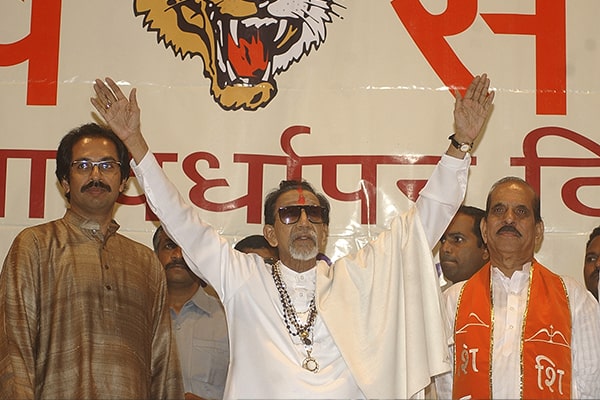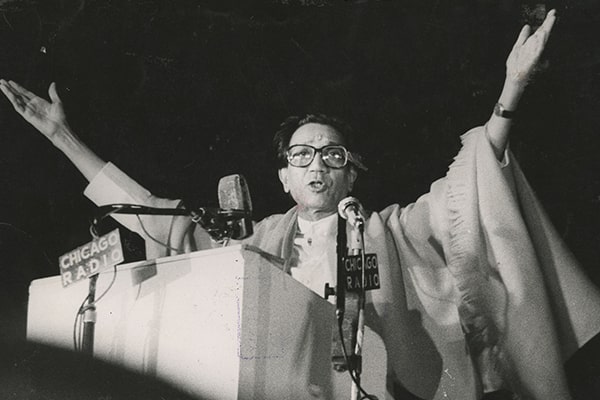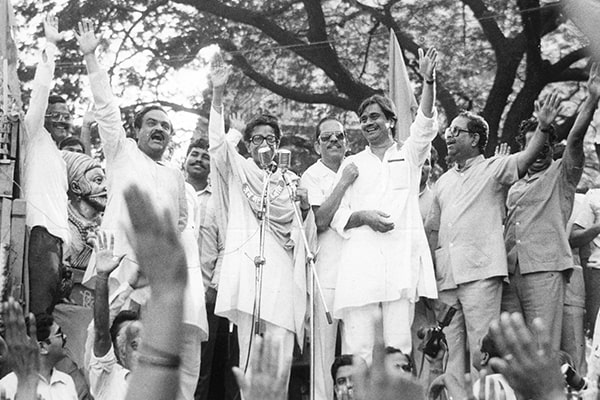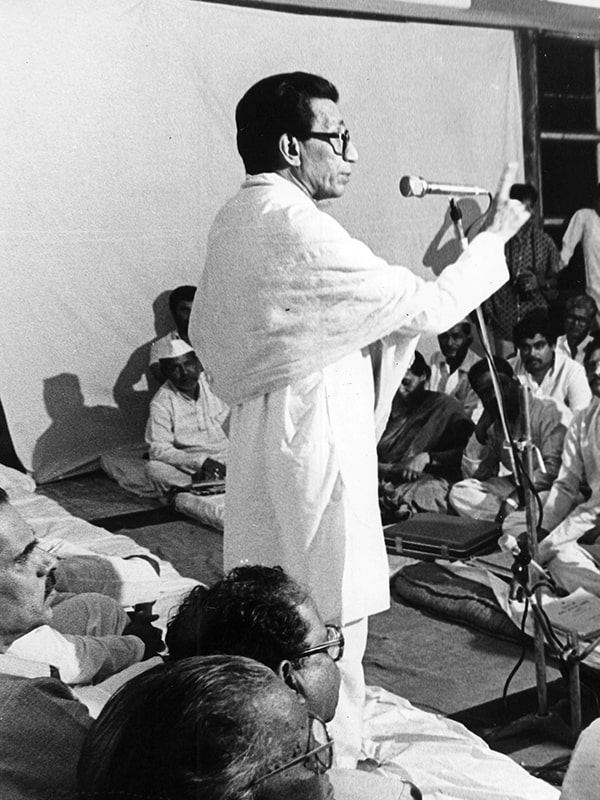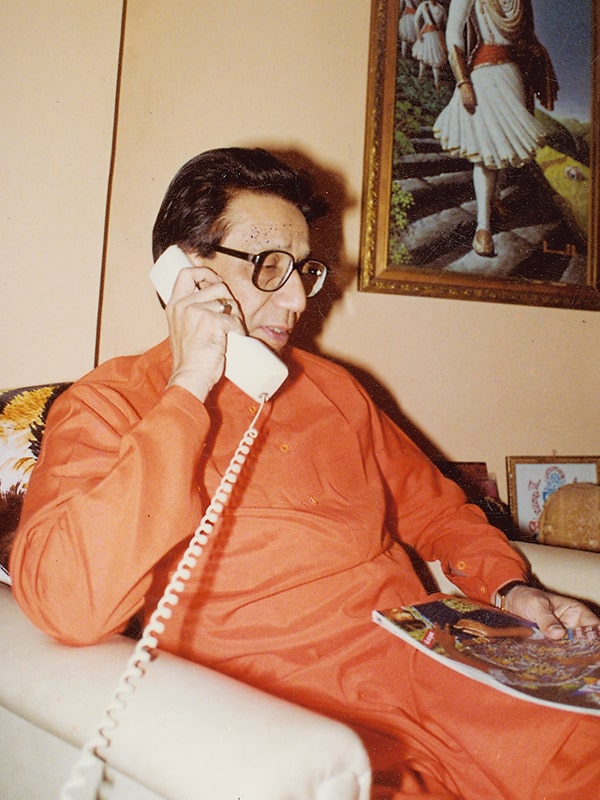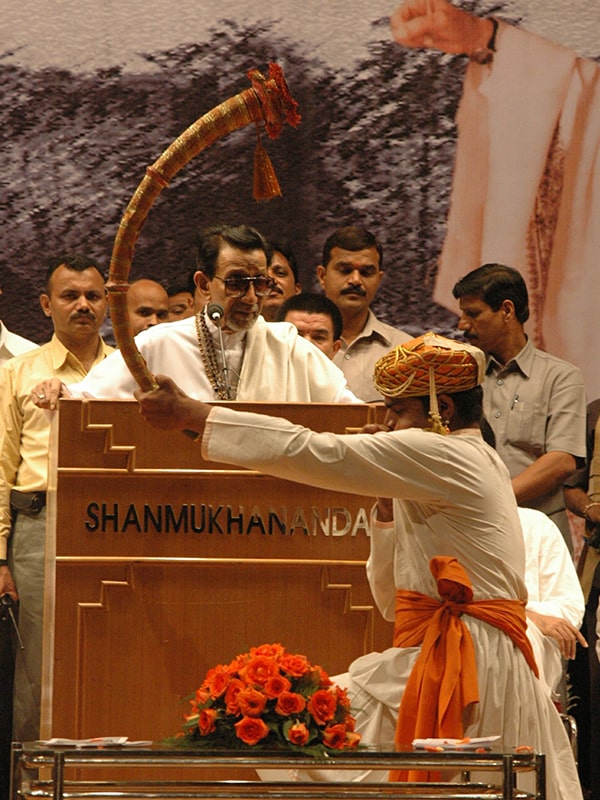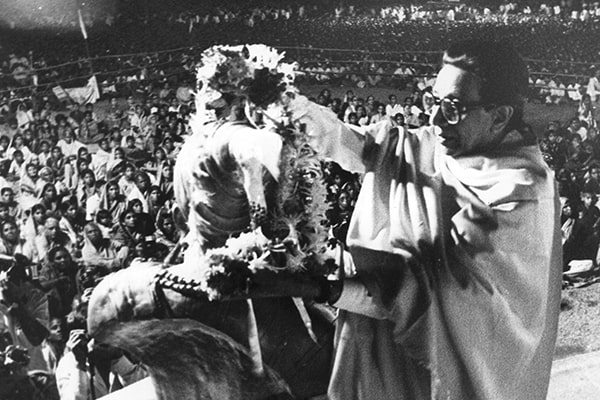GENESIS OF SHIVSENA
Balasaheb Thackeray founded the organization with the noble intention of fighting for the rights of the Marathi people and uniting them. On June 19, 1966, Balasaheb along with his family and some colleagues founded Shivsena in the verandah of Kadam Mansion, taking a pledge of Shivaji Maharaj and his philosophy. The organization awakened and energized the weakened Marathi minds. The news of the formation of Shivsena spread like wildfire in the surrounding areas. In the morning of 19th July, respected Prabodhankar himself set out on the mission of distributing forms. The word ‘Shivsena’ is relevant to youth, radiance, and the spirit of fighting for their rights. The seventh decade of the twentieth century can be termed as a glorious decade for Shivsena as they fought relentlessly for the rights of the Marathi people and the growth of the party.
Sharp, blunt, and edgy editorials and cartoons illustrated and written by Balasaheb in Marmik were eagerly read by everyone in the city. They were giving vent to the injustice being meted out by Marathi's youth. At this juncture, Marathi youth found a ray of hope in the form of Balasaheb, a father figure to them. He became their friend, philosopher, and guide. Shivsena began to grow with leaps and bounds in Mumbai and every nook and corner of Maharashtra.


LEADER OF COMMON MAN
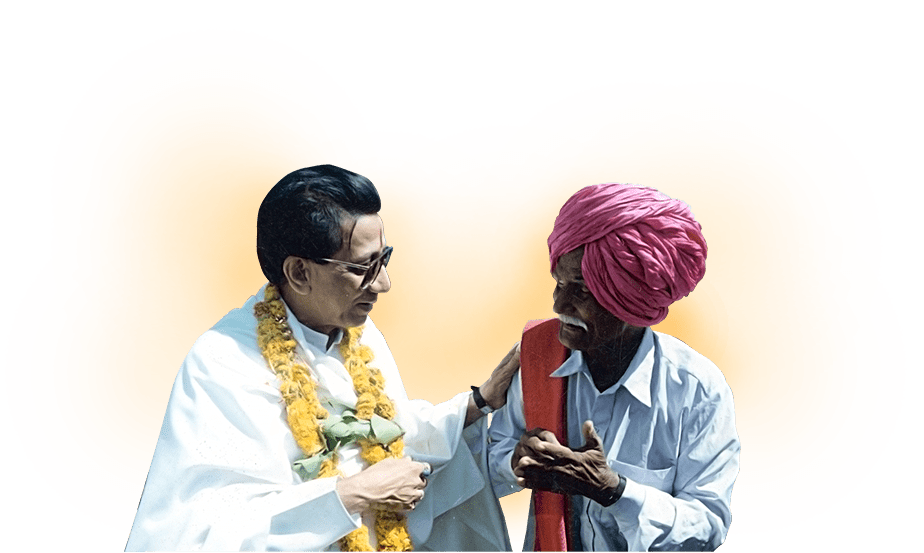
Wherever and whenever he saw injustice he fought against it. He firmly stood by anyone who had been deprived of his just rights. He hated caste politics. His organization was free from class indiscrimination. The words ‘rich’ and ‘poor’ became meaningless. Shivsena empowered the downtrodden masses. Fighting for the problems of the common man is Shivsena's first priority. “I am not alone. Not only Shivsena but Balasaheb himself is always there for me!" was the belief and trustworthiness that Balasaheb created in the mind of common people. He proved that actions speak louder than words. In the true sense, he was the leader of the masses. Miseries of masses stirred him and he strived hard to solve their problems adroitly. Balasaheb travelled through every nook and corner of Maharashtra. During these visits, he was moved to see the miserable condition of rural areas and people.

FEARLESS ORATOR
Every year the Dussehra convention is organised by Shivsena in Shivaji park. Balasaheb used to address this mammoth assembly. These speeches greatly inspired the audience. Lips reflect the mind and actions speak the thoughts. This was Balasaheb's unique style of oratory. Balasaheb thought, spoke, orated and acted. His Dussehra speeches reflect this. The anniversary celebrations of Marmik, Saamana and Shivsena used to be grand assemblies where Balasaheb used to guide Shiv Sainiks. These speeches were intense and thought provoking. Balasaheb was voracious reader, keen observer and great mimik.
The societal maladies, hypocrisy, and obnoxiousity irritated him so much that in his speeches he used to criticize those people whose actions got on his nerves. He fiercely fought for Marathi people. He could seize the moment and give the audience a vision. His speeches were powerful enough to use the dire circumstances to galvanize the people rather than frighten them and prepared them for the challenges ahead.
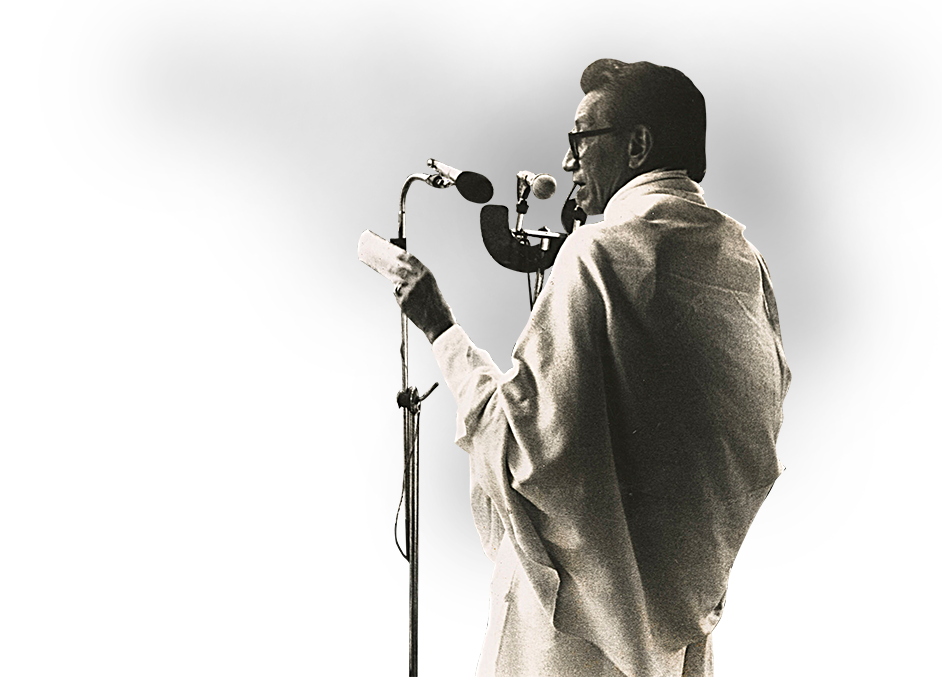

FRONTLINE FIGHTER
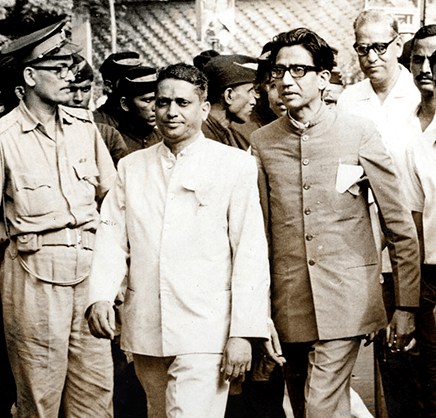
Balasaheb was a leader of the masses. The problems and plight of the common man bothered him much. He was inspired by his father Prabodhankar who used to mingle with people and encouraged Balasaheb to take up the issue and fight for it. Balasaheb himself quoted once that, “Be a tiger who roars, not a sheep who bleats.” Be it a movement of Samyukta Maharashtra, fighting for the justice of Marathi people, or any other agitation or contemporary issue Balasaheb proved to be a protector of a common man. He stood with them with all his might. He was indeed a trustworthy leader and frontline fighter.
The Seema Andolan of 1969 is also known as a glorious leaf in the history of Shivsena. The then Home Minister Moraraji Desai passed on the Shiv Sainiks with a blind eye. The agitated Shiv Sainiks were waiting for him with a petition requesting to solve the Frontier Issue. Furious Balasaheb ordered the Shiv Sainik not to turn back. Within an instant, the struggle spread like a wildfire all over Mumbai. Balasaheb was arrested. He spent 73 days in Yerwada jail. His experiences in the jail are published in 'Gajaadil Divas’ (गजाआडील दिवस).

AGITATIONS AND MOVEMENTS
1966 – 1972
- 1966: First Public Meeting of Shivsena and Bal Keshav Thackeray
- 1967: First Election, Thane Municipal Corporation
- 1968: Implementation of Hindi as the national language
- 1970: First Mayor of Shivsena
- 1971: Protest against Air India
- 1972: Rise of Shivsena in Maharashtra Legislative Council


1973 – 1982
- 1973: Shivsena’s grand agitation against inflation
- 1974: Sthaniya Lokadhikar Samiti – A wing for the white collared employees
- 1975: Balasaheb Thackeray supports Emergency. Declaration published in Marmik
- 1978: Loyal Shiv Sainiks urge Balasaheb Thackeray to continue as Shivsena Pramukh. Balasaheb retracted his resignation.
- 1980: Balasaheb Thackeray supports Shri. A.R. Antulay for Chief Ministry in Maharashtra
- 1982: Balasaheb urges chief Minister Babasaheb Bhosale to give Rs.50 hike on salary to mill workers
1983 - 1989
- 1984: Balasaheb’s protective stand towards Sikh community in Mumbai during nationwide anti Sikh riots after Smt. Indira Gandhi’s assassination
- 1985: Establishment of ‘Mahila Aghadi’ – Shivsena’s Women Front
- 1986: Expansion of Shivsena in Rural Parts of Maharashtra
- 1987: Shivsena first time contests elections on issue of Hindutva
- 1988: Sambhaji Nagar (Aurangabad) Election
- 1989: Shivsena and its election symbol got registered


1990 - 2002
- 1990: Rise of Shivsena as the Main Opposition Party in the State
- 1992: Balasaheb takes a pro Hindu stand as Hindu savior
- 1995: The Shivshahi Regime
- 1997: Shivsena’s comeback in Mumbai Municipal Corporation
- 1998: Shivsena gets Central Ministership for the first time
- 2002: Shivsena representative as Lok Sabha Speaker

SYMBOLS OF SHIVSENA
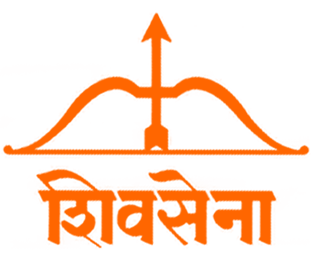

Shivsena as an organization was formed on June 19, 1966, but it took 22 long years to attain the status as a political party. The party did not have its official symbol due to noncompliance with the prerequisite norms set by the Election commission of India. In 1988, the Election Commission of India decided to register all political parties. The election commission, as per the amendment in the constitution, made it mandatory to include three elements, 'Secular, Socialist, Democracy,' in the constitution of their respective party. Shivsena Chief entrusted Mr. Subhash Desai with this task. He successfully accomplished this task.
In the Lok Sabha elections of 1989, four Shivsena MPs were elected and Shivsena obtained the official symbol of 'Bow and Arrow' due to the seats won and the percentage of votes earned by these MPs. Due to the mistake committed by the Election Commission, the party officials had to turn the tables to obtain a symbol. The commission declared Wamanrao Mahadik as an independent candidate resulting in not fulfilling the percentage of required votes. But the efforts made by the committee worked well and the party was granted its official symbol based on the total votes polled by its four MPs. Bow and Arrow, designed by Balasaheb himself, was finalized as Shivsena's official Election symbol. Tiger was finalized as the Symbol of the party.
CONSTITUTION OF SHIVSENA
It took a great deal of administrative knowledge and skill to grow an organization. Balasaheb was a keen disciplinarian and a hard taskmaster. The objectives and policy for achieving the above objectives were clearly mentioned in the constitution of Shivsena. In the objectives, it is mentioned that:
-
Shivsena believers are Indians first. Therefore, strong opposition to treason is the fundamental and undivided stance of Shivsena.
-
The basic objective of Shivsena is to unite and make the youth proactive for the attainment of self-rights and fulfillment of their national duty.
-
Shivsena gives importance to social causes rather than politics. It will participate in politics to accelerate social and national growth. It believes that public service and mass organization are the means of fulfilling social objectives.
-
Caste - religion - creed - language differences are not acceptable to Shivsena. The party urges everybody not to believe in them.



